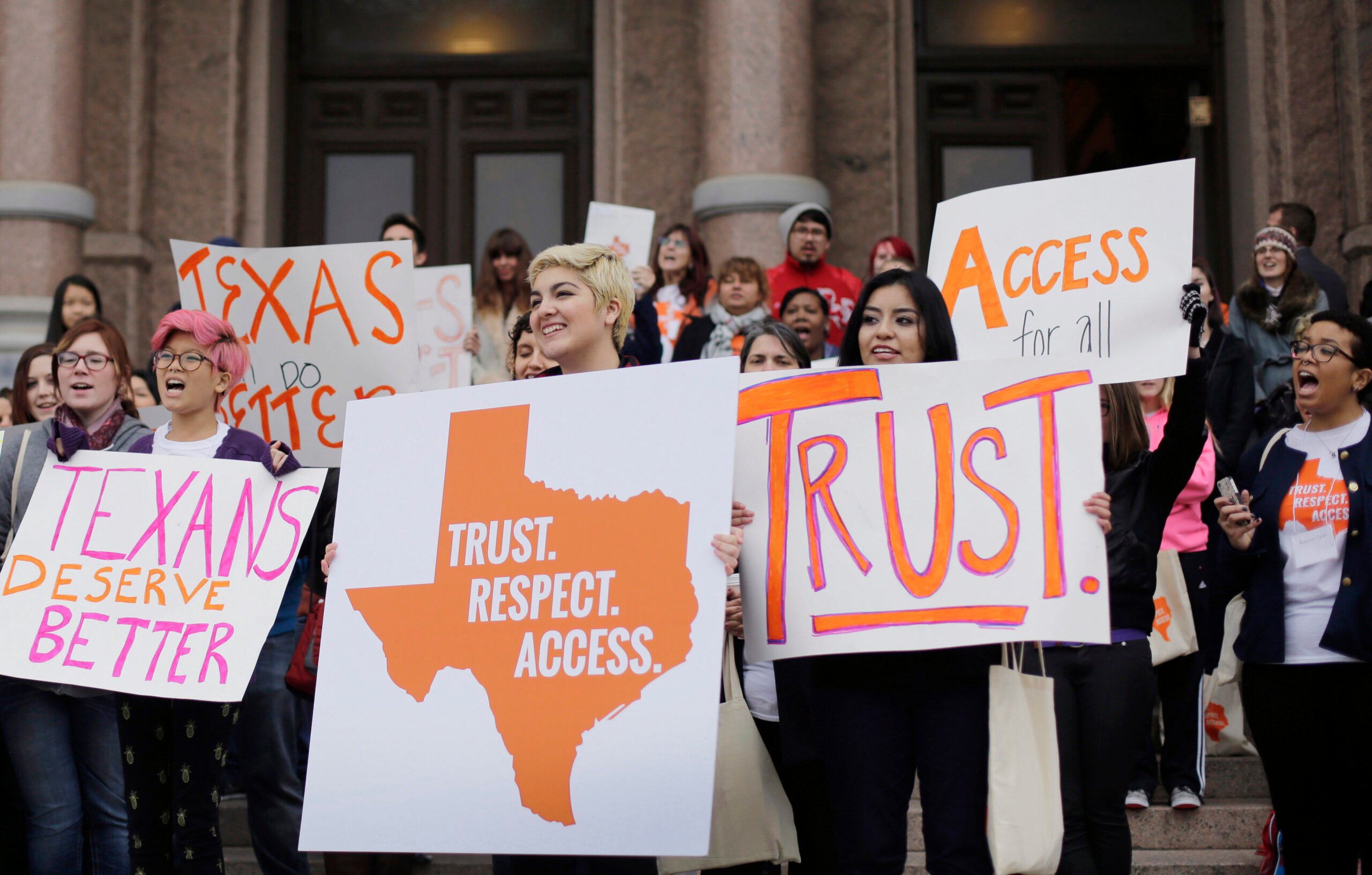
Texas Women’s Health Program to launch Nov. 1
Planned Parenthood is out of the program and state says the market will rapidly replace them. But watch out for the poison pill clause.
Above: A screenshot of the Texas Women's Health Program website.
This is the third story in our Collateral Damage series examining the impact of family planning cuts in Texas. You can read the second story in the series here.
The Texas Women’s Health Program is just about ready to roll off the factory floor. Stripped of Planned Parenthood, the new program will come to a zip code near you on Nov. 1 and will be paid for, at least at first, with savings scraped from fraud-recovery, hiring freezes and reduced overtime, state officials announced on Thursday.
The Women’s Health Program—which provides birth control and health screenings to poor women so they don’t have unintended pregnancies—had been part of Medicaid and was largely paid for by the federal government. But the federal government refused to renew the program in Texas because state Republicans insisted on excluding Planned Parenthood. So now Texas will run its own version with its own rules and with state money.
 The new-look program will cost Texas $36.3 million in the first year and $45.2 million in the second. Like it’s federally funded predecessor, it will provide family planning and preventive care to 115,000 low-income Texans, state officials say. An additional feature of the localized model is that it will also cover sexually transmitted infection treatment.
The new-look program will cost Texas $36.3 million in the first year and $45.2 million in the second. Like it’s federally funded predecessor, it will provide family planning and preventive care to 115,000 low-income Texans, state officials say. An additional feature of the localized model is that it will also cover sexually transmitted infection treatment.
In the next biennium, this shiny new state-sponsored program will cost Texas about $70 million more than when the federal government footed the bill in the last two years.
We’ve seen plenty of brouhaha over the wisdom of Texas walking away from federal money just so that Republicans don’t have to deal with Planned Parenthood. At a public hearing in September, the Department of State Health Services officials sat through fiery oratory from both sides of the political debate about the terms (known as “rules”) of the new program. Staffers then waded through more than 2,500 written comments, but in the end, only made mostly technical changes to their original plans.
One significant technical change is the removal of the so-called “gag rule,” under which the program would have forbidden doctors from even discussing abortion with their patients. The medical community kicked up so much dust about the gag rule that the Department of State Health Services changed the wording. Now, the final rules clarify that docs can talk about abortion with their patients as long as they do so in a non-directive way. The definition of non-directive? Dr. Kyle Janek, commissioner of the Texas Health and Human Services Commission explained at a press conference yesterday that a doctor may discuss abortion with a Women’s Health Program client, and even tell a client where she might get one, but they can’t make a formal referral and can’t say anything along the lines of, “I’m telling you it’s a really good idea to have an abortion.”
In a statement, Dr. Michael Speer, the Texas Medical Association’s president said: “While TMA is still reviewing the revised rules, physicians are encouraged by the state’s attempt to better define ‘promote’ to specifically exclude ‘non directive counseling.’ It is very important that patients are able to trust that their doctor is giving the best medical advice for them—based on their medical needs and nothing else.”
Perhaps a bigger element of the new rules is something called the severability clause. Essentially, this means that the Texas Women’s Health Program can shut down if it’s no longer in line with Texas law barring abortion providers from receiving state funds. This clause has been called the “poison pill” in previous debates, and its most immediate effect would be that the Texas Women’s Health Program could self-destruct should the federal courts rule in favor of Planned Parenthood (which is are suing to remain in the program). Janek confirmed that the whole program would “go away” if Planned Parenthood won the court case. “I don’t want HHSC spinning our wheels in a program that is contrary to state law,” he said.
When asked what would happen to the patients if the program went away, Janek seemed lost for words. “That would be a question … bluntly … that we had before the waiver [that set the Medicaid Women’s Health Program in motion] … a legislative session is coming up … will have to decide if they want to go in another direction.”
In a statement released yesterday, Kenneth S. Lambrecht, President and CEO of Planned Parenthood Greater Texas said it was “shocking that state officials would rather end low-income women’s access to family planning and preventive health services altogether than allow Planned Parenthood to provide these vital health services to women who chose to come to Planned Parenthood for care.”
More immediately though, the launch date of the new Program is only two weeks away. Critics argue that there aren’t enough non-Planned Parenthood providers to meet the demand, but Janek is optimistic. “My job is to build the most robust network of providers that we can,” he said, arguing that until recently large providers had made it impossible for smaller ones to compete. “As long as there’s a market, we’re confident we’ll get the number of providers needed,” he said. “Everybody else can fight over the details,” he added.
But that still gives these smaller providers only two weeks to gear up. Janek acknowledged that this might be tough but said that his agency has been contacting existing Medicaid contractors and urging them to participate. “We need to pound the pavement and tell the providers to get involved,” he said, emphasizing that there are hundreds of them in the system. However, the former state senator refused to say whether every client would find a doctor on Nov. 1 if she needed one. “I don’t guarantee anything,” he said.
Planned Parenthood was the largest single provider in the Women’s Health Program. Excluding them could deny birth control to thousands of poor women.
Despite his careful wording about 100-percent access on launch date, Janek was fulsome in his faith in an agile market now invigorated (one assumes) by the forced exit of its largest provider. As of this week, the rules of the Texas Women’s Health Program are final, which means that there’s nothing to stop small providers flocking into the market. We need wait only two weeks to see how many actually do.


